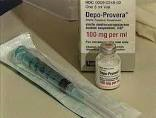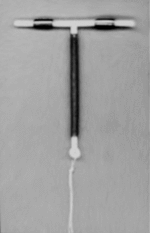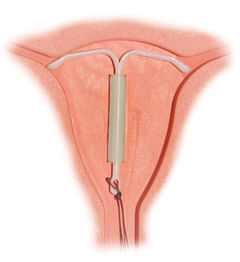Module 10: Injectable, implantable, and intrauterine contraception
The benefit of using implants and intrauterine (IUD) contraception is that the failure rate for perfect use is similar to that of typical use. These are thus good methods for those women and their partners who wish a method with less impact from user failure. These 2 methods, now often called LARC (long acting reversible contraceptives) ,are top of the list for preventing unintended pregnancies. In New Zealand the only injectable available is Depo Provera (medroxyprogesterone acetate) which is given intramuscularly, usually into the buttock, every 12 weeks. Although the injection has a similar low perfect use and typical use failure rate it does have problems with continuation. The main mode of action is similar to that of the combined pill ie prevents ovulation. Many women who cannot use the combined pill because of the estrogen content will be able to use DepoProvera. The injection itself is fully subsidized in NZ - the cost to the woman being the cost of the health practitioner visit.
As we have said, IUDs and implants, are the real long acting methods as the injection needs to be given 3 monthly and about 50% of women stop the method in the first year of use.
There are 2 implants available internationally. Jadelle, a 2 rod implant releasing levonorgestrel. It is available in NZ and is now subsidized, so costs $5 on a script at the pharmacy plus the cost of the consultation and supplies to insert it. It has a failure rate of much less then 1% for the first 4 years and about 1% in the 5th year. Implanon, a 3 year implant ,is not available in NZ but is widely used in Australia. As with all progestogen-only methods, bleeding irregularity is a common side effect. The implants come with a trocar and are inserted under local into the inside of the non dominant arm above the elbow. Unlike DepoProvera, they do not give sufficient contraceptive cover if a woman is also taking enzyme inducing medication. Only trained personel should insert and remove implants. If you would like further information about implants have a look at Progestogen-only implants from the Faculty of Sexual and Reproductive Health.
The Copper IUD - the Copper TT 380 can be used for ten years at which time renewal is necessary. However if put in over the age of 40 years it can stay in till menopause. The failure rate of this devices is less than 1%. The other type of IUD in NZ is the levonorgestrel IUD (Mirena) often called an intrauterine system(IUS).This has the progestogen levonorgestrel on the stem instead of copper and has a similar low failure rate to the Multiload. The main reason for choosing Mirena over a Cu IUD would be the benefit it has for heavy menstrual bleeding with the potential to decrease menstruation by 80%.
The Copper TT is fully subsidized and so is free, however there is no subsidy for Mirena use if it is only for contraception. The cost for the device is then in the region of $350. However women with heavy menstrual bleeding, with a documented haemoglobin of < 120 g/l or ferritin < 16mcg/l in the previous 12 months, can ask their doctors to apply for special subsidy to MOH. These women must also have previously tried another treatment for heavy bleeding which was either not beneficial or not tolerated. Once these criteria have been fulfilled and the form filled in and accepted, the GP will be issued with an approval number - this is written on a script for the Mirena. When the woman presents the script to the pharmacy the cost will then only be $5 prescription charge.
Pictures of the Jadelle implants and Depo Provera,Copper TT 380 IUD, and the Mirena IUS,




 Objectives
Objectives
By the end of this section you should be able to:
- inform women regarding the mode of action, failure rate and potential side effects of Cu IUDs, Mirena IUS, contraceptive implants and Depo Provera
- counsel women regarding suitability of these methods for their individual circumstances.
 Readings
Readings
Royal College of Obstetricians and Gynaecologists, Faculty of Sexual and Reproductive Healthcare, Clinical Effectiveness Unit. Intrauterine contraception. 2015. Available from: https://www.fsrh.org/standards-and-guidance/documents/ceuguidanceintrauterinecontraception/
Royal College of Obstetricians and Gynaecologists, Faculty of Sexual and Reproductive Healthcare, Clinical Effectiveness Unit. Progestogen only implants. 2014. Available from: https://www.fsrh.org/documents/cec-ceu-guidance-implants-feb-2014/
Royal College of Obstetricians and Gynaecologists, Faculty of Sexual and Reproductive Healthcare, Clinical Effectiveness Unit. Progestogen only injectable contraception. 2014. [Updated 2015]. Available from: https://www.fsrh.org/documents/cec-ceu-guidance-injectables-dec-2014/
Contraception: Method specific guidance website
https://www.fsrh.org/standards-and-guidance/current-clinical-guidance/method-specific/
| « Summary | Depo Provera » |



